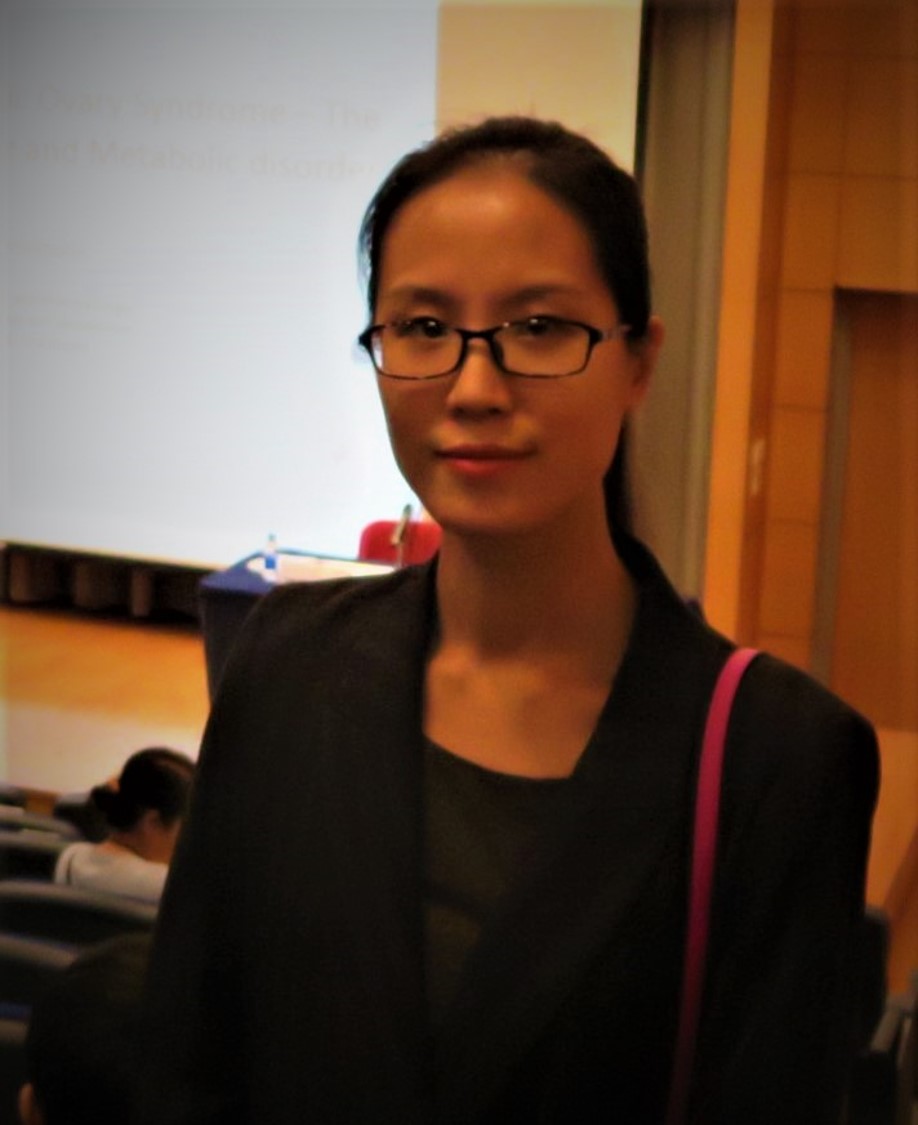JIANG Shan
PhD, Research Assistant
JIANG Shan, PhD, Research Assistant
E-mail:shanchiang@bjmu.edu.cn

The research field
Acupuncture Theory, History of Medical Thoughts
Education experience
2014-2017 China Academy of Chinese Medical Sciences (PhD)
2011-2014 Beijing Language and Culture University (MTCSOL)
2006-2011 Tianjin University of Traditional Chinese Medicine (BMed)
Work experience
11/2019 - 10/2020 International Research Center for Japanese Studies (Visiting Research Fellow)
09/2018 - 09/2019 University College London (Visiting Fellowship)
07/2017 - 06/2021 Peking University (Postdoctor)
Secretary of Department
Teaching Course: History of Medicine
10/2012 - 04/2013 McMaster University
Teaching Assistant of Chinese Language Classes
Executive Assistant to Director
Courses
History of Medical Technology for Undergraduates
Academic papers
[1] JIANG Shan, SUN Hai-shu, ZHANG Hua-min. Xinke Youke Baixiao Quanshu and Its Infantile Massage Therapy for Difficult Disease. Journal of Guangzhou University of TCM, 2015, 32(6):1128-1130.
[2] JIANG Shan, ZHAO Jing-sheng. The Original Meaning of Ashi and the Derivation of Ashi Point. Chinese Acupuncture & Moxibustion, 2016, 36(2):197-199.
[3] JIANG Shan, ZHAO Jing-sheng. The Historical Source of "Trigger Points": Classical Ashi Points. World Journal of Acupuncture & Moxibustion, 2016, 26(2):11-14.
[4] JIANG Shan, ZHAO Jing-sheng. The Discussion about Qi of Abstract and Concrete Based on the Lingshu: Xingzhen. Journal of Basic Chinese Medicine, 2016, 22(2):224-226.
[5] JIANG Shan, ZHAO Jing-sheng. From the Qi Annotation in Xiaozhenjie to Qi View in Ancient Time. Chinese Acupuncture & Moxibustion, 2016, 36(4):425-427.
[6] JIANG Shan, ZHAO Jing-sheng. Comparison and Enlightenment of Discussions on Qi in Two English Monographs of TCM. Journal of Basic Chinese Medicine, 2016, 22(6):827- 830.
[7] JIANG Shan, ZHAO Jing-sheng. Meridian and Model Theory. Journal of Nanjing University of TCM, 2016, 17(3):146-149.
[8] JIANG Shan, ZHAO Jing-sheng. Discussion on Qi from the View of Model Theory. Journal of Basic Chinese Medicine, 2016, 17(1):1-5.
[9] JIANG Shan, ZHAO Jing-sheng. Definition of Ashi Point from the Perspective of Linguistics. China Acupuncture & Moxibustion, 2017, 37(1):75-78.
[10] JIANG Shan, ZHAO Jing-sheng. Aggrieved Qi: What Does Needling Supplement and Draining, Journal of Beijing University of TCM, 2017, 40(7):613-616.
[11] JIANG Shan, LI Su-yun, ZHAO Jing-sheng. The Thoughts of "Twelve Diseases" in Lingshu. Journal of Basic Chinese Medicine, 2017, 23(3):378-379.
[12] JIANG Shan, ZHAO Jing-sheng. Qi Runs Through Acupuncture Needle Stimulation and Pulse Diagnosis: Our Considerations about Connotations of Qi in Acupuncture Diagnosis Treatment Scriptures in Yellow Emperor's Inner Canon. Research of Acupuncture- Moxibustion, 2017, 42(1):76-78.
[13] JIANG Shan, ZHANG Li-jian, ZHAO Jing-sheng. Illustration of the Characteristics and Enlightenments of the Development of Acupuncture and Moxibustion Hospital of CACMS. China Acupuncture & Moxibustion, 2018, 38(7):769-772.
[14] JIANG Shan, ZHAO Jing-sheng. Origin and Development of “Needling Follows the Trend of Nature” and the Idea of Acclimating the Trend. Journal of Traditional Chinese Medicine, 2018, 59(22):1970-1972.
[15] JIANG Shan, ZHAO Jing-sheng. The Idea of Acclimating the Trend and Qi. Journal of Traditional Chinese Medicine, 2018, 59(24):2081-2084.
[16] JIANG Shan, ZHANG Shujian, ZHAO Jingsheng. Technical evolution of acu-moxa instruments with analysis on hidden motivation and intellectual history. Science & Technology Review. 2019, 37(15):24-31.
[17] JIANG Shan, ZHANG Daqing. Traces of Chinese and Western medicine in the Kanbun bronze acupuncture figure. Chinese Acupuncture & Moxibustion. 2019, 39(10):1103-1108.
[18] JIANG Shan, ZHANG Daqing. Acupuncture and Humanities: A Preliminary Study on the Research Path and Contemporary Literature Overview. Journal of Traditional Chinese Medicine. 2019, 60(24):2095-2098.
[19] JIANG Shan, ZHANG Daqing. The Origin of Paper Figures for Acu-Moxa in the Edo Period. Journal of Dialectics of Nature. 2020, 42(4):62-67.
Monographs
JIANG Shan, ZHAO Jing-sheng, Acupuncture and Qi [M]. Beijing: People's Medical Publishing House, 2018
Research subject
Projects led as a chief researcher
[1] Innovative Research Program for PhD Students in CACMS: Concept and Ideology of Qi in Acupuncture Classics (Completed)
[2] Scientific Fund for Postdoctoral Researchers NO. 62: A Study of Bronze Sculptures for Acu-Moxa in the Edo Period: Grasping the Intersection of East-West Medical Thought (In progress)
Projects attended as a key researcher
[1] National Basic Research Program of China – 973 Plan In Progress: Research on the Theoretical Frame and Structure of Acupuncture (Completed)
[2] Special Basic Research Program of the MOST: Ancient Literature and Local Records of TCM (Completed)
[3] Beijing Natural Foundation Program: Supplement and Draining Methods of Acupuncture before Ming Dynasty (Completed)
[4] Chinese Sleep Research Society Funding: History of Chinese Sleep Medicine (In progress)
[5] National Science Foundation Program: General Function of “Classified Needling Points” and the Regularity of Their Relations with Locations (In progress)
[6] National Science Foundation Program: Dimension of Piercing and The Relation with Efficacy (In progress)
[7] National Major Social Science Funding Project: Evolution of Chinese Medical Knowledge since Song-Yuan Dynasty and the Formation of Modern “TCM” (In progress)
[8] National Social Science Funding Project: Historical and Empirical Research on the Participance of PRC in Governance of Global Health (In progress)
Award
Excellent Academic Dissertation in 2017


